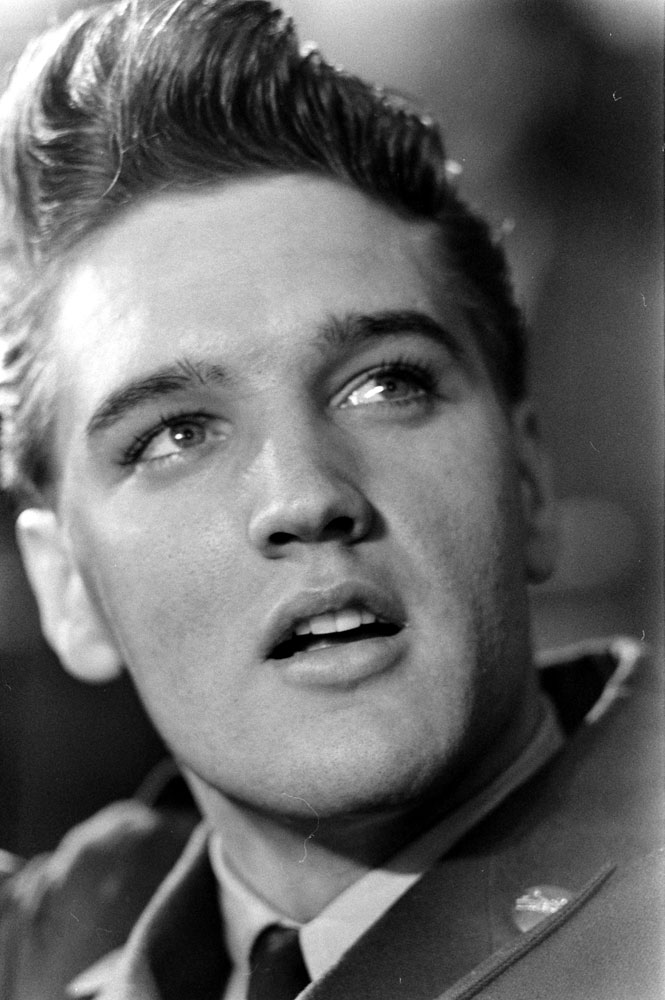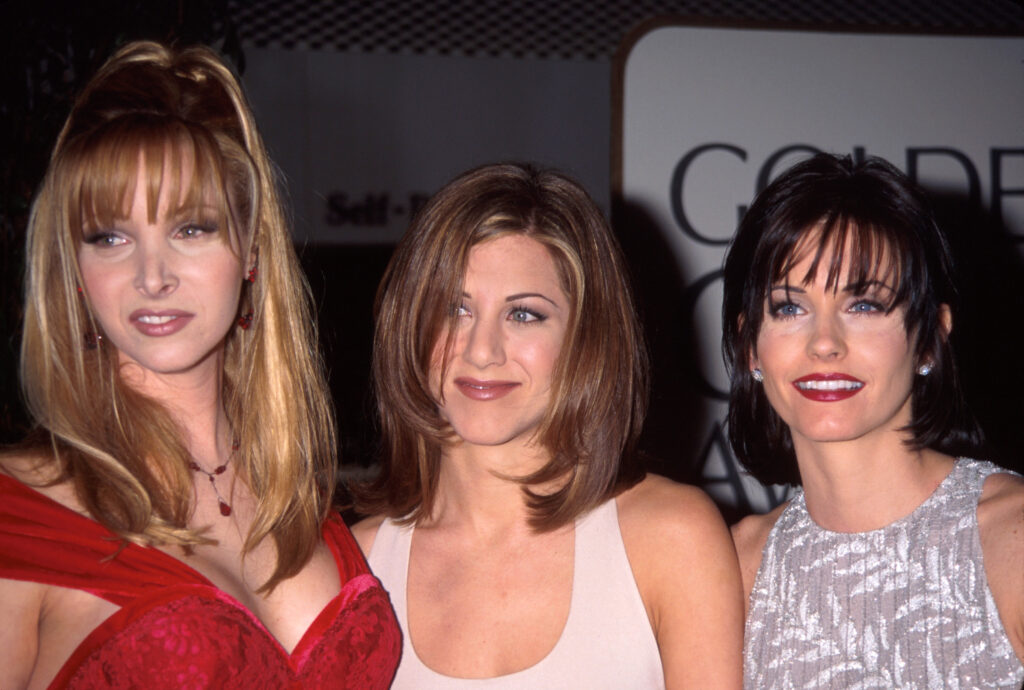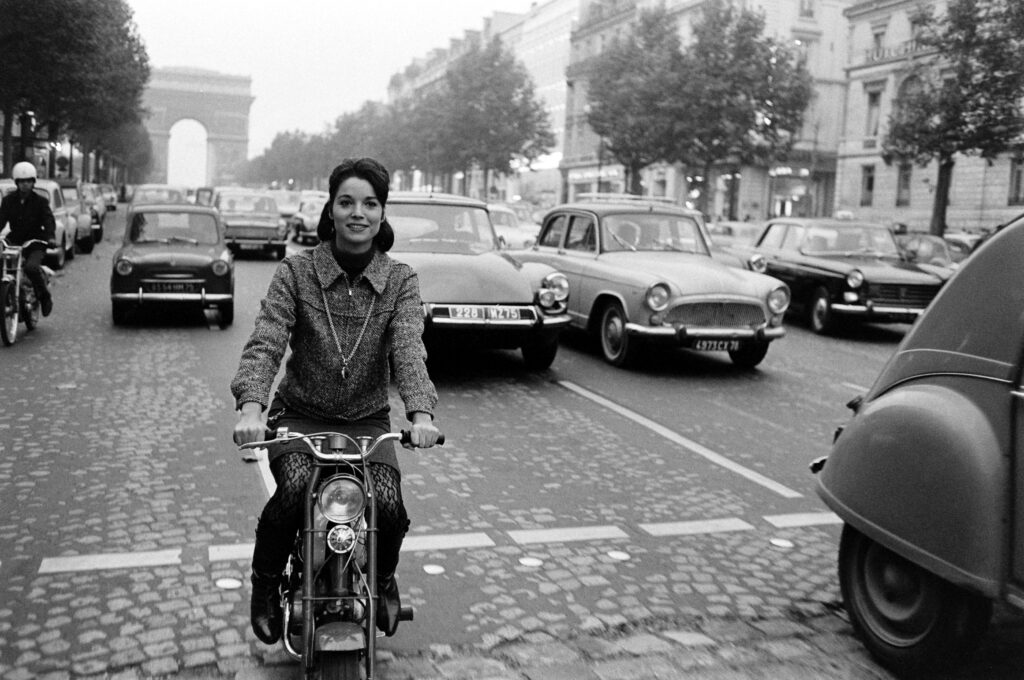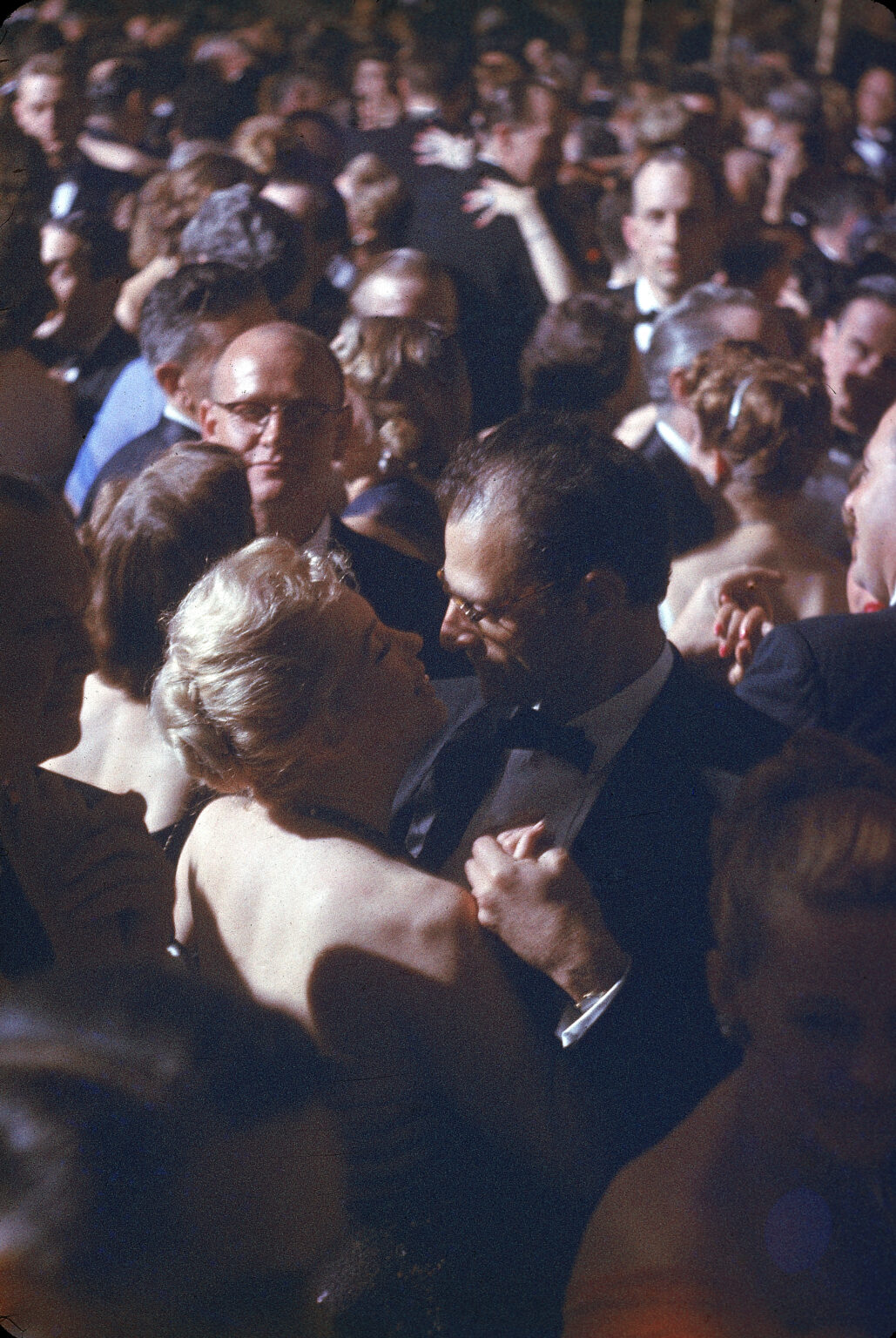It’s intriguing to imagine contemporary American music stars serving in the military. How would Kanye West fare in the Air Force? Would Adam Levine cut it in the Army? But when a young man who was, at the time, the biggest musical star on the planet was drafted into the United States Army back in 1958, the uniform seemed to fit. Sure, Elvis Aron Presley often affected a sneer that would drive most drill sergeants to near-apoplexy, and his pompadour was hardly the sort of hairstyle one associated with military discipline. But Elvis, born in Tupelo, Mississippi and raised in Tennessee, had humble Southern roots that may have allowed for a more seamless transition from pop-culture icon to buck private.
Whatever the reason, for a couple of years, Elvis Presley looked like he belonged in a uniform and by all accounts, his brothers in arms saw what he was made of, and accepted him as one of them. It was impossible, of course, for anyone to pretend that Elvis was just another soldier; but he worked hard to fit in and to do what was asked of him, and after two years, when Sgt. Presley was honorably discharged, it was evident that the boy from Tupelo had grown up.
It was also evident, that Elvis was hardly heartbroken about leaving the military. His two years serving in Germany had shown the world, and had shown Elvis himself, that he could handle something more than a guitar, and could perform tasks that didn’t involve gyrating in front of screaming bobbysoxers. In 1960, it was time to get back to doing what he did best: it was time to leave Sgt. Presley behind, and be Elvis again.
Here, LIFE.com presents a series of photos—most of which never ran in LIFE magazine—showing Elvis, along with his 15-year-old girlfriend, Priscilla Beaulieu, in Germany on the day he left to return to the States (March 2, 1960), and Elvis again at Fort Dix, New Jersey, where he landed on March 3, sans Priscilla. He was officially discharged from the Army on March 5. These pictures, by LIFE photographers James Whitmore and Al Fenn, capture a moment in Elvis’s life when he was poised to remind everyone who may have doubted it that, despite two years of taking orders, he was ready to again be the King.
A few weeks later, in its March 14, 1960, issue, LIFE put it this way to its millions of readers:
“In a spectacular shift of power that critically exposed the flank of U.S. music lovers, the Army returned US53310761 from Germany last week for mustering out at Fort Dix, N.J. Fans mobilized to fighting strength and tuned up their shrieks . . . Elvis was back.
After his two year hitch, rock and roll idol Elvis Presley wore a sergeant’s chevrons but no sideburns. “If I say the Army made a man of me,” he said, “it would give the impression I was an idiot before I was drafted. I wasn’t exactly that.”
Elvis was, in fact, a smart soldier. His agents back home had been pretty smart, too, selling 20 million RCA Victor records to the jukebox set. These earned “The Pelvis” $1.3 million in addition to his $145.24 a month service pay. Elvis paid the U.D. 91% of the total in taxes, or enough to support about 150 of his fellow soldiers for a year.
Behind him at Ray Barracks near Friedberg, Elvis had left hordes of palpitating Fräuleins and the pretty 16-year-old Priscilla Beaulieu, daughter of an Air Force captain stationed at Wiesbaden. Elvis kissed her before he flew to the aid of the girls back home, sorrowful at parting but anxious to get into his bright-colored pants and back to his hip-swinging singing.”

Sgt. Elvis Presley prepared to leave Germany, March 1960.
James Whitmore/Life Pictures/Shutterstock

Sgt. Elvis Presley prepared to leave Germany, March 1960.
James Whitmore/Life Pictures/Shutterstock

Sgt. Elvis Presley prepared to leave Germany, March 1960.
James Whitmore/Life Pictures/Shutterstock

Sgt. Elvis Presley prepared to leave Germany, March 1960.
James Whitmore/Life Pictures/Shutterstock

Sgt. Elvis Presley held a press conference before leaving Germany, March 1960.
James Whitmore/Life Pictures/Shutterstock

Sgt. Elvis Presley held a press conference before leaving Germany, March 1960.
James Whitmore/Life Pictures/Shutterstock

Sgt. Elvis Presley held a press conference before leaving Germany, March 1960.
James Whitmore/Life Pictures/Shutterstock

Sgt. Elvis Presley held a press conference before leaving Germany, March 1960.
James Whitmore/Life Pictures/Shutterstock

Sgt. Elvis Presley held a press conference before leaving Germany, March 1960.
James Whitmore/Life Pictures/Shutterstock

Sgt. Elvis Presley prepared to leave Germany, March 1960.
James Whitmore/Life Pictures/Shutterstock

Sgt. Elvis Presley peered out of the window of the house he and his family occupied in Bad Nauheim, Germany, March 1960.
James Whitmore/Life Pictures/Shutterstock

Sgt. Elvis Presley left the house he and his family occupied in Bad Nauheim, Germany, March 1960.
James Whitmore/Life Pictures/Shutterstock

Elvis Presley’s grandmother and Priscilla Beaulieu left the house that Elvis and his family occupied in Bad Nauheim, Germany, March 1960
James Whitmore/Life Pictures/Shutterstock

Sgt. Elvis Presley left the house he and his family occupied in Bad Nauheim, Germany, March 1960.
James Whitmore/Life Pictures/Shutterstock

Priscilla Beaulieu rode in the back seat with Elvis as German fans crowded around the car.”
James Whitmore/Life Pictures/Shutterstock

Elvis and Priscilla left the house he and his family occupied in Bad Nauheim, Germany, March 1960.
James Whitmore—Time & Life Pictures/Shutterstock

Elvis and Priscilla left the house he and his family occupied in Bad Nauheim, Germany, March 1960.
James Whitmore/Life Pictures/Shutterstock

Elvis and Priscilla left the house he and his family occupied in Bad Nauheim, Germany, March 1960.
James Whitmore/Life Pictures/Shutterstock

Elvis and Priscilla left the house he and his family occupied in Bad Nauheim, Germany, March 1960.
James Whitmore/Life Pictures/Shutterstock

Sgt. Elvis Presley prepared to leave Germany, March 1960.
James Whitmore/Life Pictures/Shutterstock

Priscilla Beaulieu, Germany, March 1960.
James Whitmore/Life Pictures/Shutterstock

Priscilla Beaulieu waved to Elvis as the plane took off from Germany for the U.S.
James Whitmore/Life Pictures/Shutterstock

Sgt. Elvis Presley prepared to leave Germany, March 1960.
James Whitmore/Life Pictures/Shutterstock

Priscilla Beaulieu, Germany, March 1960.
James Whitmore/Life Pictures/Shutterstock

Priscilla Beaulieu was escorted from the tarmac after saying goodbye to Elvis, Germany, March 1960.
James Whitmore/Life Pictures/Shutterstock

Elvis Presley fans congregated at the house in which Elvis and his family lived, shortly after he left the house for the last time, Bad Nauheim, Germany, March 1960.
James Whitmore/Life Pictures/Shutterstock

Elvis Presley fans, McGuire Air Force Base, New Jersey, March 1960.
Al Fenn/Life Pictures/Shutterstock

Elvis Presley fan, McGuire Air Force Base, New Jersey, March 1960.
Al Fenn/Life Pictures/Shutterstock

Elvis Presley fan, McGuire Air Force Base, New Jersey, March 1960.
Al Fenn/Life Pictures/Shutterstock

Elvis Presley fans, McGuire Air Force Base, New Jersey, March 1960.
Al Fenn/Life Pictures/Shutterstock

Elvis Presley arrived at McGuire Air Force Base, New Jersey, March 1960.
Al Fenn/Life Pictures/Shutterstock

Elvis Presley fans, McGuire Air Force Base, New Jersey, March 1960.
Al Fenn/Life Pictures/Shutterstock

Elvis Presley arrived at McGuire Air Force Base, New Jersey, March 1960.
Al Fenn/Life Pictures/Shutterstock

Elvis Presley fans, McGuire Air Force Base, New Jersey, March 1960.
Al Fenn/Life Pictures/Shutterstock

Elvis Presley arrived at McGuire Air Force Base, New Jersey, March 1960.
Al Fenn/Life Pictures/Shutterstock

Elvis Presley fan, McGuire Air Force Base, New Jersey, March 1960.
Al Fenn/Life Pictures/Shutterstock

Elvis Presley fans, McGuire Air Force Base, New Jersey, March 1960.
Al Fenn/Life Pictures/Shutterstock

Elvis Presley fan, McGuire Air Force Base, New Jersey, March 1960.
Al Fenn/Life Pictures/Shutterstock

Elvis Presley fans, McGuire Air Force Base, New Jersey, March 1960.
Al Fenn/Life Pictures/Shutterstock

Elvis Presley fan, McGuire Air Force Base, New Jersey, March 1960.
Al Fenn/Life Pictures/Shutterstock

Elvis Presley at Fort Dix, New Jersey, shortly before his discharge from the U.S. Army, March 1960.
Al Fenn/Life Pictures/Shutterstock

Elvis Presley at Fort Dix, New Jersey, shortly before his discharge from the U.S. Army, March 1960.
Al Fenn/Life Pictures/Shutterstock

Elvis Presley at Fort Dix, New Jersey, shortly before his discharge from the U.S. Army, March 1960.
Al Fenn—Time & Life Pictures/Shutterstock

Elvis Presley at Fort Dix, New Jersey, shortly before his discharge from the U.S. Army, March 1960.
Al Fenn/Life Pictures/Shutterstock

Elvis Presley at Fort Dix, New Jersey, shortly before his discharge from the U.S. Army, March 1960.
Al Fenn/Life Pictures/Shutterstock

Elvis Presley at Fort Dix, New Jersey, shortly before his discharge from the U.S. Army, March 1960.
Al Fenn/Life Pictures/Shutterstock

Elvis Presley at Fort Dix, New Jersey, shortly before his discharge from the U.S. Army, March 1960.
Al Fenn/Life Pictures/Shutterstock

Elvis Presley at Fort Dix, New Jersey, shortly before his discharge from the U.S. Army, March 1960.
Al Fenn/Life Pictures/Shutterstock

Elvis Presley at Fort Dix, New Jersey, shortly before his discharge from the U.S. Army, March 1960.
Al Fenn/Life Pictures/Shutterstock

Elvis Presley at Fort Dix, New Jersey, shortly before his discharge from the U.S. Army, March 1960.
Al Fenn/Life Pictures/Shutterstock

lvis Presley at Fort Dix, New Jersey, shortly before his discharge from the U.S. Army, March 1960.
Al Fenn/Life Pictures/Shutterstock

lvis Presley at Fort Dix, New Jersey, shortly before his discharge from the U.S. Army, March 1960.
Al Fenn/Life Pictures/Shutterstock

Elvis Presley (and, at right, actress Tina Louise) at Fort Dix, New Jersey, shortly before his discharge from the U.S. Army, March 1960.
Al Fenn/Life Pictures/Shutterstock

Elvis Presley at Fort Dix, New Jersey, shortly before his discharge from the U.S. Army, March 1960.
Al Fenn/Life Pictures/Shutterstock

Elvis Presley at Fort Dix, New Jersey, shortly before his discharge from the U.S. Army, March 1960.
Al Fenn/Life Pictures/Shutterstock





























































































































































